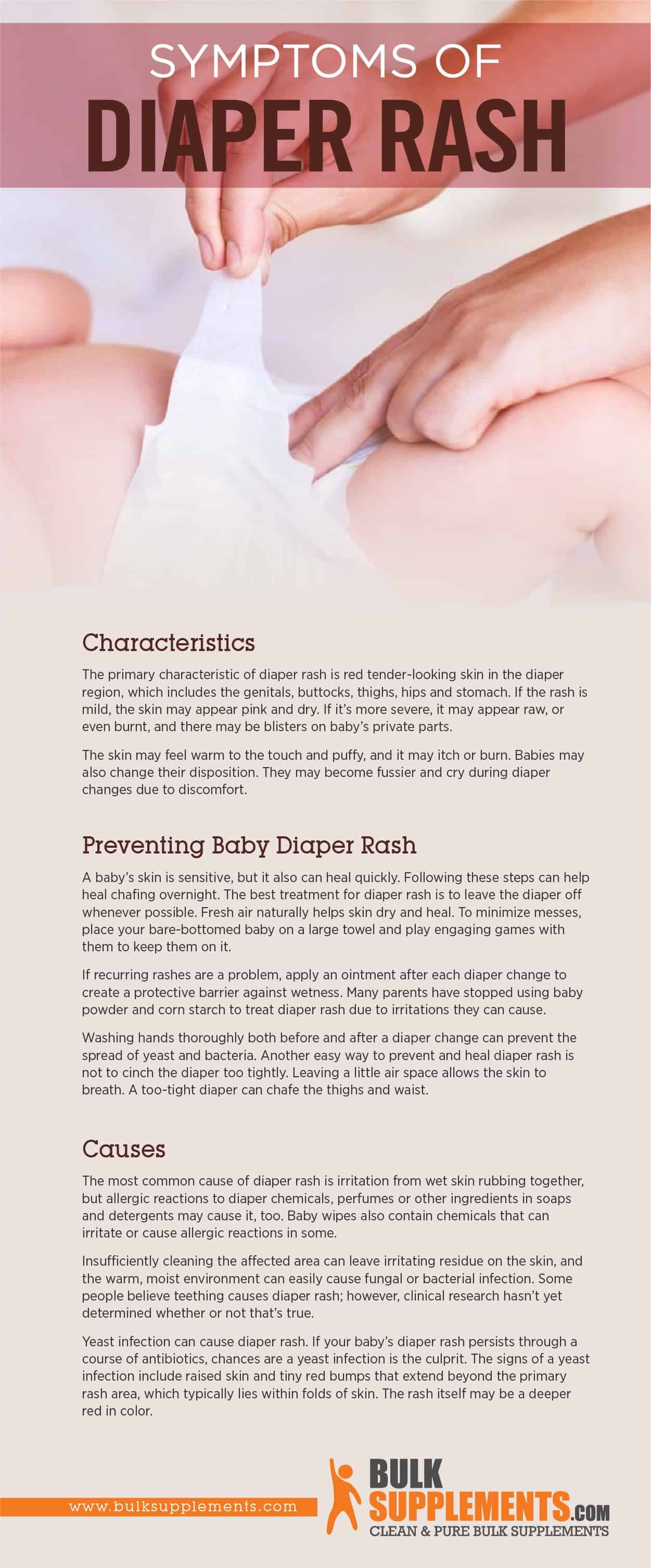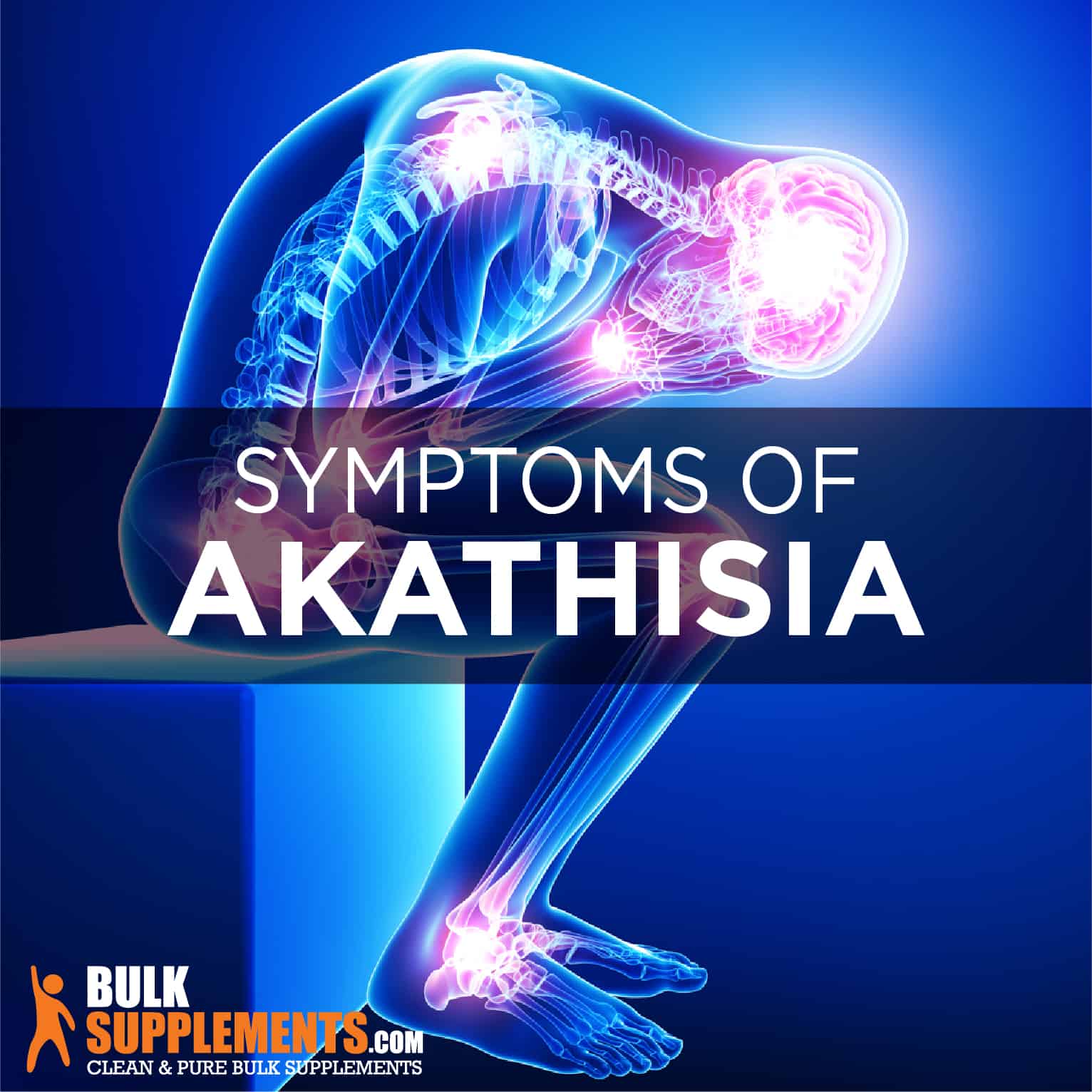Diaper Rash: Characteristics, Causes & Treatment

Diaper Rash
What is Diaper Rash?
Diaper rash is a common skin irritation (dermatitis) that shows up as bright red skin beneath a diaper. Cases can be mild to severe, affecting only a small area with just a few spots or a much larger area with red bumps and broken skin. In more severe cases, the skin may feel warm to the touch and appear puffy. While babies suffer this condition the most, it can affect anyone wearing diapers (incontinence briefs).
Diaper rash happens to just about every baby, particularly during the first year. It may upset the baby and cause worry for parents. But parents can usually treat the condition at home by changing diapers more often and applying zinc-based ointments.
Wearing wet diapers, rubbing or chafing and having sensitive skin all contribute to the onset of diaper rash. New medications, foods, soaps or perfumes may also contribute. A bacterial or yeast infection may also be the cause of diaper rash — warmth and moisture trapped inside the diaper can create the perfect breeding ground for germs.
Adult Diaper Rash and Hemorrhoids
Adults wearing incontinence briefs sometimes get bumps or pimples around the anus. These may be hemorrhoids, not diaper rashes. A hemorrhoid is a swollen vein in the anus or lower rectum accompanied by pain, itching and swelling. Straining during bowel movements, obesity, pregnancy, staying seated for long periods of time or heavy lifting may all cause hemorrhoids.
A warm bath, cotton underwear and limiting time spent sitting (including time on the john) can all help reduce the onset of hemorrhoids and diaper rash. Adult diaper rash can occur alongside other skin conditions, such as eczema, psoriasis and seborrhea.
The first line of defense against diaper rash is prevention. Frequent diaper changes, rinsing affected areas with plain water after each change and allowing the skin to air-dry — or at most gently patting it with a towel — will help keep the diaper area clean and dry and minimize the risk of diaper rash.
Preventing Baby Diaper Rash
A baby’s skin is sensitive, but it also can heal quickly. Following these steps can help heal chafing overnight. The best treatment for diaper rash is to leave the diaper off whenever possible. Fresh air naturally helps skin dry and heal. To minimize messes, place your bare-bottomed baby on a large towel and play engaging games with them to keep them on it.
If recurring rashes are a problem, apply an ointment after each diaper change to create a protective barrier against wetness. Many parents have stopped using baby powder and corn starch to treat diaper rash due to irritations they can cause.
Washing hands thoroughly both before and after a diaper change can prevent the spread of yeast and bacteria. Another easy way to prevent and heal diaper rash is not to cinch the diaper too tightly. Leaving a little air space allows the skin to breath. A too-tight diaper can chafe the thighs and waist.
When to See the Doctor
If the diaper rash doesn’t go away within a few days or if it recurs, talk to your doctor. If the rash gets worse — it bleeds, oozes pus or causes pain or fever — take your baby to your doctor. Your baby may need a prescription.
Diaper Rash Symptoms and Causes
Characteristics
The primary characteristic of diaper rash is red tender-looking skin in the diaper region, which includes the genitals, buttocks, thighs, hips and stomach. If the rash is mild, the skin may appear pink and dry. If it’s more severe, it may appear raw, or even burnt, and there may be blisters on baby’s private parts.
The skin may feel warm to the touch and puffy, and it may itch or burn. Babies may also change their disposition. They may become fussier and cry during diaper changes due to discomfort.
Causes
The most common cause of diaper rash is irritation from wet skin rubbing together, but allergic reactions to diaper chemicals, perfumes or other ingredients in soaps and detergents may cause it, too. Baby wipes also contain chemicals that can irritate or cause allergic reactions in some.
Insufficiently cleaning the affected area can leave irritating residue on the skin, and the warm, moist environment can easily cause fungal or bacterial infection. Some people believe teething causes diaper rash; however, clinical research hasn’t yet determined whether or not that’s true.
Yeast infection can cause diaper rash. If your baby’s diaper rash persists through a course of antibiotics, chances are a yeast infection is the culprit. The signs of a yeast infection include raised skin and tiny red bumps that extend beyond the primary rash area, which typically lies within folds of skin. The rash itself may be a deeper red in color.

Diaper Rash Home Remedies
Natural remedies for diaper rash include coconut oil, baking-soda/oatmeal baths, magnesium oil, bentonite clay, aloe vera, calendula, evening primrose oil and zinc oxide ointments.
Magnesium Oil
Magnesium oil is widely known for its anti-inflammatory properties. Clinical research has shown that diaper rash cream containing magnesium oil and calendula is effective for treating diaper rash in children.
Bentonite Clay
Bentonite clay, also known as montmorillonite, absorbs moisture and has anti-inflammatory and antibacterial properties. Clinical research has shown that this remedy works quickly to heal affected skin, within hours of application. Mix a small amount with water to make a paste, and apply it to the affected area. Let dry for 10 to 15 minutes, then gently remove with water.
Aloe Vera
The use of aloe vera as a skin soother goes back thousands of years to early Egyptian times. If the rash is severe and skin is broken, aloe may sting; it may work better on milder diaper rashes. Allow the aloe to dry and leave it on the skin. Reapply throughout the day.
Calendula
Many health-care practitioners around the world have used calendula, a perennial herbaceous plant, to treat inflamed skin and wounds for hundreds of years. Clinical research has shown that calendula oil can soothe diaper rash. You can use it on its own or with aloe vera. Apply as needed.
SEE ALSO

Akathisia: How to Stop the Restlessness. Symptoms and Treatment
Evening Primrose Oil
For generations, Native Americans have used evening primrose oil, an anti-inflammatory, to treat hemorrhoids and bruises. Many use it today to treat a variety of inflammatory conditions, including eczema, allergies and rheumatoid arthritis. You can find evening primrose in not only oils but also lotions. Apply a small amount to the affected area with each diaper change.
Zinc Oxide
Zinc oxide creates a moisture barrier, helping the skin stay dry. The American Academy of Dermatology recommends that zinc oxide be left on all day long and then washed off completely at the end of the day.
Coconut Oil
Coconut oil has antibacterial, antifungal and antimicrobial properties. You can apply coconut oil directly to the skin or use it to whip up a natural diaper rash cream. In a small pot on the stove, mix a 1/2 cup of coconut oil with a 1/4 cup of shea butter and a teaspoon of arrowroot powder, stirring gently to blend. Store in a sterilized jar in a cool, dry place. Note that some individuals are allergic to coconut, so watch for signs of allergy — breathing difficulties, swelling, coughing or dizziness.
Baking Soda
Baking soda has a laundry list of uses. It can soothe the skin, neutralize acids and inhibit the growth of bacteria and yeast. Mix two to three heaping spoonfuls in 3 to 4 cups of warm water. Let the affected area soak, and then leave it to air-dry, or gently pat it dry with a towel.
You can also use baking soda in a yogurt bath. Wash the skin with a mix of yogurt and cool water and allow it to dry. Apply a thin layer of baking soda, and after an hour, apply a waterproof barrier such as zinc oxide, petroleum jelly or olive oil to protect the skin.
You can also mix up a spot treatment by mixing 1 to 2 tablespoons of baking soda with warm water. Use a sponge to apply the mixture to the affected area. Allow it to dry and leave it on, putting the baby in a fresh diaper. Bonus tip; you can also soak cloth diapers in a mixture of a 1/2 cup of baking soda with 2 quarts of warm water before washing to obtain a better clean.
Oatmeal Bath
To make an oatmeal bath, pour oatmeal into an old stocking and leave it in the bath. Allow the baby to soak for 20 minutes. Oatmeal baths can work wonders, even on severe diaper rashes. You can also add baking soda and milk to the oatmeal for extra healing power. Blend a 1/4 cup oatmeal to make a fine powder. Use 1 tablespoon of milk and 2 teaspoons of baking soda, and add to a warm bath. Let the baby soak for 10 to 15 minutes and pat dry.
The Bottom Line
No pun intended, and diaper rash is no joke. Warm, moist skin rubbing together promotes bacterial and fungal growth and is the main cause of diaper rash. Diaper chemicals, perfumes, foods and soaps may also cause it.
Diaper rash can make babies and their parents unhappy, but sufficiently cleaning affected skin and allowing it to air-dry, frequently changing diapers and applying ointments made with zinc oxide or aloe can usually clear it up quickly. Before trying home remedies to treat diaper rash, take your baby to see your doctor.



